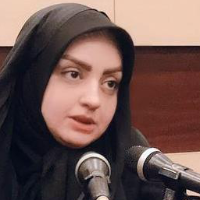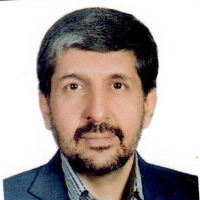A Comparative Typological Study of Interrogative words in Persian and Arabic
Currently, the major discussions in the field of Linguistics belong to Typology and Linguistic Universals. Typology is a linguistic study that analyzes the structural similarities among languages regardless of their history. This term was first applied to the categorical and comparative study of linguistic notions by a linguist named Gublentez. Typology is not merely a tool for categorizing and defining general patterns in languages. It is an approach for understanding the nature of language as well. In typological studies, attempts are made to group languages from different families in order to reach more precise studies and results. This article also consists of the same attempt. Persian is an Indo-European language, and Arabic is a Semitic one. Language Universals refer to the characteristics and features which are present in most languages worldwide. This notion is known due to the efforts of Greenberg. After analyzing 30 different languages, he proposed the notion of Language Universals. Typology and Language Universals show a strong relationship and complement each other due to the fact that typological categorization leads to the discovery of universal principles in the structure of languages. The relation between language universals and typology dates back to 1960s. From that point in history, the notion of typology is accompanied by Greenberg’s Language Universals. Studying the order of structural elements has been one of the most important discussions in the world of Typology. That is firstly due the fact that languages have more differences in this matter and these differences are the foundation of typological studies. Secondly, according to Greenberg, between the order of fundamental parts and other structural features of language exist a typological correlation.The most important and common approach for posing a question in languages is through interrogative words. By using interrogative words various notions such as place, time, people, and causes are subject to inquiry. The existence of such words is universal, that is, it seems highly unlikely to find a language that does not carry interrogative words. In typology numerous factors are analyzed, among which is understanding the movements of interrogative words in languages. Dabirmoghadam (1393) has proposed 24 factors, and factor 22 relates to interrogative words. Topologists have identified two main types: first is that interrogative words replace the element of the notion which is put under question, and second, interrogative words are placed at the beginning of a question sentence. In this study, an attempt is made to study the movement of interrogative words in both Persian and Arabic in order to illustrate their position in the lingual typological system. In addition, the influencing factors on this movement are discussed. The method of this study is analytical-descriptive and selected pieces are from published and online materials (books, newspapers and magazines) in both languages and these pieces are from various areas ranging from social to religious, scientific, literal and so on. In the theoretical framework of the study, there are some details related to interrogative words in both languages and a table is drawn consisting of these words in Arabic and Persian respectively. Meanwhile the movement of interrogative words were defined that in this research it refers to the place of such words in sentences in comparison to the same declarative sentence. In the analysis, firstly some of the important views related to these words are represented; in Persian, views by Bateni (1392), Khanlari (1391), Vafai (1392), Gholamhossein Zade (1391) and Meshkataldini (1374), and in Arabic views by Sibooye (2004), Ebn al Saraj (1999), Hassan (1975), Jorjani (1982) and etc., afterwards, selected pieces which consist the basis of this research are analyzed. According to the findings of this research, Persian and Arabic fall into different types of interrogative words movements. The tendency in Persian is to replace the element of question, while in Arabic interrogative words come at the beginning of a question sentence. Furthermore, these two languages are compatible to the language universals they represent. With well more than chance frequency, when question particles or affixes are specified in position by reference to the sentence as a whole, if initial, such elements are found in prepositional languages, and, if final, in postpositional. Plus, if a language has dominant order “VSO” in declarative sentences, it always puts interrogative words or phrases first in interrogative word questions; if it has dominant order “SOV” in declarative sentences, there is never such an invariant rule. This conclusion is based on the analysis of cases indictive of the fact that the movement of interrogative words to the beginning of the sentence is a strong tendency in Arabic language. As a result, Arabic language corresponds to Language Universal number 12 since this universe acknowledges the movement of interrogative words to the beginning of a sentence in “VSO” structures. Additionally, since interrogative words in Arabic are among those which question the nature of a sentence, they come at the beginning of a sentence. Language universal number 9 also acknowledges Arabic language since it carries more prepositions. Furthermore, it is recognized that interrogative words replace the element of question in a sentence. This fact shows the tendency of this language. Therefore, Persian language with the core structure of “SOV” is in harmony with the language universal of number 12. According to this universe, the movement of interrogative words does not tend to come at the beginning of a sentence in “SOV” structures. The above-mentioned findings are presented in a table. Another finding of this research is that structural, semantic and processing factors have an impact on the movement of interrogative words. For instance, in Persian the interrogative word of “why” usually comes at the beginning of a sentence since it put the nature of a sentence under question. However sometimes, a conflict occurs between the word “why” and other elements such as “interjection” on the first position of the sentence and the interrogative word gives the space to interjectory words and comes in second. To propose another example, interrogative words tend to occupy the first position in a sentence in Arabic, however sometimes it is observed that the element of question has occupied the first position, while the interrogative word is in the second position. In fact, this replacement is due to the significance of the element.
- حق عضویت دریافتی صرف حمایت از نشریات عضو و نگهداری، تکمیل و توسعه مگیران میشود.
- پرداخت حق اشتراک و دانلود مقالات اجازه بازنشر آن در سایر رسانههای چاپی و دیجیتال را به کاربر نمیدهد.




